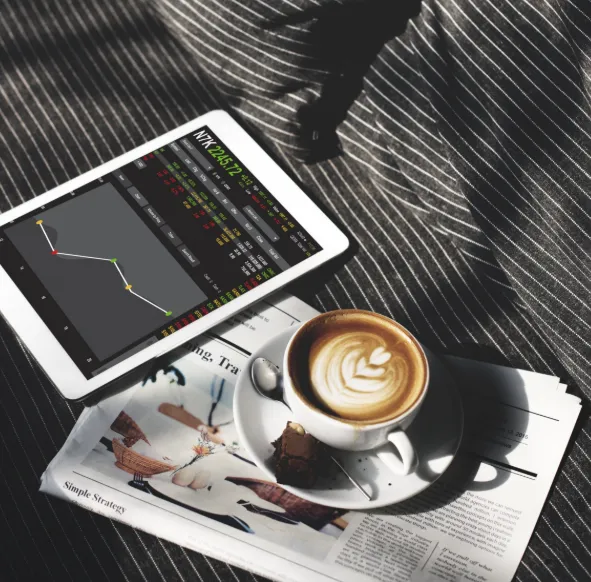Risk management is one of the most vital components of successful day trading. Without it, traders expose themselves to unnecessary losses that can quickly erode capital and derail long-term profitability. Whether you’re new to the markets or looking to refine your strategy, understanding how to manage risk effectively is key to sustaining your trading career.
This blog explores the most common risks in day trading, practical techniques to control them, and essential rules to protect your capital in volatile market environments.
Understanding Risk in Day Trading
Day trading involves entering and exiting positions within the same day to take advantage of short-term price movements. While this approach can generate profits quickly, it also comes with high risk due to rapid market fluctuations and limited time for decision-making.
Several risk factors impact day traders:
- Market volatility: Unexpected news, geopolitical shifts, or economic events can drive prices in unpredictable directions.
- Instrument-specific risks: Stocks, futures, and other assets may react sharply to company reports or sector-related developments.
- Capital exposure: Larger trades or leverage amplify both profits and losses, increasing overall risk.
To manage these challenges, traders must first identify the different types of risks they may encounter.
Categories of Risk in Day Trading
- Market Risk: The chance that the entire market moves against your position due to broader economic or political developments.
- Credit Risk: Particularly relevant when trading on margin, this risk refers to the possibility of your broker or counterparty failing to fulfill their obligations.
- Liquidity Risk: The inability to buy or sell a position quickly at a favorable price can result in slippage and unexpected losses.
- Operational Risk: Technical failures, platform outages, or unreliable internet connections can interfere with order execution, especially during volatile periods.
Being aware of these risks is the first step. The next is implementing strategies to reduce their impact.
Why Risk Management Matters
Effective risk control isn’t just about limiting losses—it also helps traders make sound, unemotional decisions. Here’s how:
- Better decisions: With a predefined risk plan, traders can focus on strategy rather than reacting to market noise.
- Emotional discipline: Limiting risk per trade helps reduce the influence of fear or greed.
- Capital preservation: Controlling losses means you live to trade another day—and position yourself for long-term growth.
In short, smart risk management fosters consistency, resilience, and confidence.
Practical Risk Management Techniques for Traders
Here are some core strategies that every active trader should incorporate:
1. Create a Detailed Trade Plan
Successful trades begin with solid planning. Define your entry, exit, and add-on points before placing a trade. Adding to winning positions can boost profits, but only if done within a disciplined framework. Never add to a losing trade based on hope.
2. Apply the One-Percent Rule
Limit your risk to no more than 1% of your total capital on any single trade. This prevents one bad trade from significantly damaging your account. For instance, if your trading balance is $10,000, keep your maximum loss per trade at $100.
3. Use Stop-Loss and Take-Profit Orders
Setting predefined exit points for both losses and gains ensures you stay disciplined. Use technical tools like support/resistance levels, moving averages, and volatility ranges to help determine appropriate stop-loss and take-profit levels. Adjust based on market conditions and instrument behavior.
4. Diversify Your Trading Positions
Avoid overexposing yourself to a single asset or market. Spreading trades across sectors or instruments helps reduce the impact of a poor-performing position. Traders can also consider geographic diversification or multiple asset classes to cushion portfolio swings.
Core Rules to Guide Day Trading Risk Management
The most successful traders follow a clear set of rules to manage risk. Here are three essential ones:
Rule 1: Define Your Risk Tolerance
Know how much capital you’re willing to lose without jeopardizing your ability to trade. This varies for every trader. Conservative strategies should align with your comfort level to prevent anxiety-based mistakes.
Rule 2: Manage Position Sizes Wisely
Adjust trade size according to the size of your account and current market conditions. Use a consistent method for calculating position size based on your defined risk per trade. This creates structure and reduces the temptation to go “all in” on a single trade.
Rule 3: Be Ready to Cut Losses
Exiting a losing trade is often the hardest but most necessary move. Stop-loss orders help remove emotion from the equation. If your trade isn’t working as expected, don’t hesitate to exit. Letting losses run can quickly spiral out of control.
Final Thoughts
Risk management isn’t optional—it’s a fundamental part of trading success. By applying discipline through planning, limiting position sizes, and using tools like stop-loss orders, traders can reduce exposure and improve long-term outcomes.
While risk can’t be eliminated, it can be controlled. A well-managed trading strategy backed by sound risk controls not only protects your capital but also sharpens your decision-making skills over time.
Build your trading routine on a foundation of solid risk management, and you’ll be better equipped to navigate the fast-paced world of day trading with confidence and clarity.













